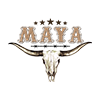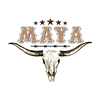DTF Transfers for Micro‑Brands: Launch a No‑Inventory Custom Apparel Business with UV DTF, Blank T‑Shirts, Hoodies, Hats & Dropshipping
Introduction: Why DTF transfers are ideal for micro‑brands in 2025
In 2025, micro‑brands and solopreneurs still face the same challenge: how to sell high-quality, on‑trend custom apparel without stocking piles of inventory. DTF transfers (direct‑to‑film) and the newer UV DTF processes let you produce vibrant, durable prints on blank t‑shirts, hoodies, and hats on demand. Combined with dropshipping fulfillment, they make it possible to scale a brand with minimal upfront cost, faster turnaround, and lower waste.
This guide covers everything from basics for beginners to advanced operational tips for experienced sellers. We’ll explain the tech (DTF vs UV DTF), show how to set up a no‑inventory business, compare methods (screen printing, embroidery, direct‑to‑garment), and share tactical SEO, pricing, and marketing advice. We’ll also highlight how MAYA TX supports micro‑brands with same‑day pickup in Austin, nationwide shipping, dropshipping fulfillment, and a wide selection of blank apparel.
What are DTF transfers and UV DTF? A clear, non‑technical explanation
DTF transfers: Print your artwork onto a PET film using pigment inks, sprinkle a hot‑melt adhesive powder on the wet print, and cure it. The resulting transfer is heat‑pressed onto fabric, leaving a thin, flexible print that adheres well to cotton, poly‑cotton blends, and many other textiles.
UV DTF: Uses UV‑curable inks that are cured instantly under UV lamps on the film. The result is often brighter, more consistent colors and faster processing. UV DTF can improve edge definition and allow for quicker turnarounds on short runs — an advantage for on‑demand sellers who need speed and color fidelity.
DTF transfers vs. other decoration methods
DTF vs. Screen Printing
- Best use: DTF for small runs, many colors, photographic prints. Screen printing for large runs and spot‑color designs.
- Cost structure: Screen printing has higher setup and plate costs; DTF favors low minimums and on‑demand.
- Durability: Both are durable; proper curing and powder application are critical for DTF longevity.
DTF vs. Direct‑to‑Garment (DTG)
- DTG prints directly onto fabric and is great for cotton and soft hand prints. DTF transfers add flexibility to print on blends and non‑traditional fabrics.
- DTF transfers are easier to stock as transfer inventory or to combine with dropshipping models.
DTF vs. Embroidery
- Embroidery adds texture and perceived luxury — ideal for caps, polos, and premium products. DTF delivers full‑color graphics and photographic detail.
- Use hybrid approaches: DTF front print + embroidered sleeve or cap logo for upsells.
Why UV DTF is important for micro‑brands
- Faster curing for quicker fulfillment and the potential for same‑day or next‑day shipping.
- Brighter, more stable colors — especially valuable on dark garments.
- Improved compatibility with certain specialty fabrics and non‑traditional substrates, expanding product offerings.
Start a no‑inventory DTF apparel business: step‑by‑step
- Pick a niche: Local pride, pet owners, micro‑influencer merch, eco‑friendly apparel, or a design aesthetic (minimal, retro, hand‑drawn).
- Design bank: Build 20–50 adaptable designs. Provide PNGs (300 DPI) with transparent backgrounds; keep files color‑managed (sRGB/Adobe RGB) and provide vector versions where possible.
- Select blanks: Choose a balanced catalog of blank t‑shirts, hoodies, and hats in reliable cuts. Quality is critical: offer different price points (basic, premium, organic).
- Choose fulfillment: Dropship finished prints directly to customers or order DTF transfers shipped to you for local pressing. MAYA TX offers dropshipping fulfillment — we print and ship for your customers — plus same‑day pickup in Austin and nationwide shipping.
- Set up storefronts: Use Shopify for full control and Etsy for marketplace traction. Automate order flows (Shopify apps, APIs) to send orders to your print partner.
- Test & sample: Order proof samples for each blank, colorway, and transfer type you intend to sell.
- Launch & market: SEO, paid ads, influencer partnerships, and email marketing. Highlight fast fulfillment (same‑day pickup/Austin or nationwide) and product quality.
Design and file specs that reduce reprints
- Provide files at 300–600 DPI, sized to final print dimensions (e.g., 12" x 16" for large tees).
- Use PNGs with transparent background for transfers. Supply vector files for logos and scalable elements.
- Include color notes: HEX or Pantone values if exact brand colors matter. Discuss color profiling with your print partner for best accuracy.
- Outline text and expand strokes to avoid font substitution issues.
Pricing strategy, margins & example calculations
Pricing must cover all costs and leave room for marketing. Example for a custom tee sold at $30:
- Blank t‑shirt cost: $7–$12 (depending on quality)
- DTF transfer/print: $4–$8
- Fulfillment & shipping (dropship): $6–$10
- Platform fees & payment processing: 5–10%
- Gross margin: Aim for at least 30% after all costs; optimize via AOV, bundles, subscription/memberships, or wholesale offers.
Fulfillment models: pros and cons
Dropshipping (Print & Ship)
- Pros: Zero inventory, lower risk, focus on marketing and design.
- Cons: Lower margins per item, dependency on partner SLAs, and less control over packaging/quality unless co‑packed.
Transfers shipped to you (Press locally)
- Pros: Better control over finishing and packaging; potential for higher perceived quality.
- Cons: Requires equipment or local pressing arrangements and some inventory of blanks or transfers.
Hybrid
- Combine both: keep bestsellers in small stock and dropship custom or seasonal items.
Operations: integration, automation & SLAs
- Automate order routing from Shopify/Etsy to your print partner via apps or API integrations to reduce manual errors.
- Set clear SLAs: production times, proof approval windows, shipping carriers, and tracking communication.
- Offer expedited options and clearly state domestic vs. international shipping times. MAYA TX supports same‑day pickup in Austin and nationwide shipping to help meet customer expectations.
Quality control checklist
- Always order pre‑production samples and wash tests for each design/blank combination.
- Check adhesion, wash fastness, hand feel, and print placement.
- Document approved samples with photos and notes to avoid rework disputes.
Care instructions & customer communication
- Provide washing instructions: cold wash, gentle cycle, tumble low or hang dry, avoid chlorine bleach, and iron inside out if needed.
- Include care cards in packages or on product pages to reduce damage claims and returns.
Marketing & SEO tailored to DTF micro‑brands
- Target keyword clusters: "DTF transfers," "UV DTF," "custom apparel dropshipping," "blank t‑shirts," "hoodies and hats."
- Create how‑to content: "DTF vs screen printing," "how to start a no‑inventory apparel brand," "best blanks for DTF printing."
- Use product schema, fast page speed, and mobile‑first design for better rankings.
- Leverage marketplaces like Etsy for discovery and link products back to your Shopify store to build an email list and capture repeat customers.
- Use social proof: unboxing videos, influencer partnerships, and user‑generated content to build trust quickly.
Packaging, branding & unboxing
- Even with dropshipping, you can request branded packing slips or custom poly mailers from fulfillment partners to preserve brand experience.
- Consider inserts: discount codes, care cards, and QR codes to encourage repeat purchases.
Legal & IP: what to watch for
- Avoid copyrighted designs unless you own rights or have licenses. Platforms can suspend listings for IP violations.
- Protect your brand: trademark key logos and product lines where appropriate.
- Include clear terms of service, returns, and privacy policies on your storefront.
Sustainability and supply chain considerations
- Offer organic or recycled blanks and advertise fabric content clearly. Many buyers value sustainability, and this can be a differentiator.
- Short‑run DTF reduces overproduction compared with bulk screen printing, aligning with waste‑reduction goals.
Industry resources and further reading
- Internal MAYA TX resources: DTF Transfers, UV DTF, Blank Apparel, Dropshipping.
- External: Printful (print‑on‑demand industry reference), Shopify Blog (ecommerce and scaling guides), Oberlo (dropshipping insights).
Call to action: launch your micro‑brand with MAYA TX
If you want to start a no‑inventory custom apparel business, MAYA TX can help: order DTF transfers or UV DTF prints, shop a curated selection of blank t‑shirts, hoodies, and hats, and enable dropshipping fulfillment so we print and ship directly to your customers. We offer same‑day pickup in Austin and nationwide shipping to meet your timelines.
Ready to get started? Visit our DTF Transfers, UV DTF, Blank Apparel, and Dropshipping pages to request quotes, order samples, or set up integration with your Shopify or Etsy store. Prefer to talk to someone? Contact MAYA TX support for pricing, sample orders, and fulfillment setup.
Build fast. Test often. Scale smart. Your micro‑brand can thrive with DTF transfers and the right fulfillment partner.


















